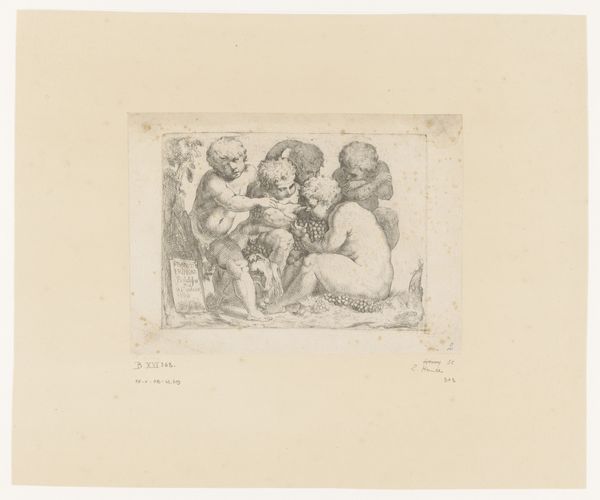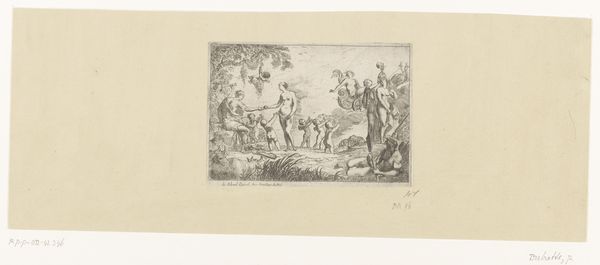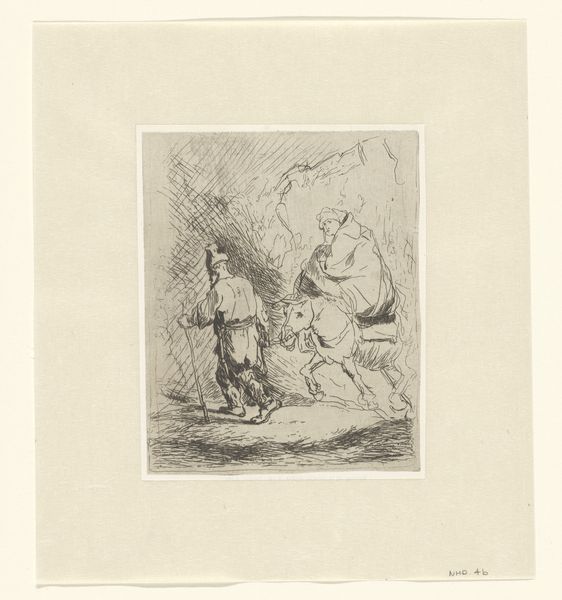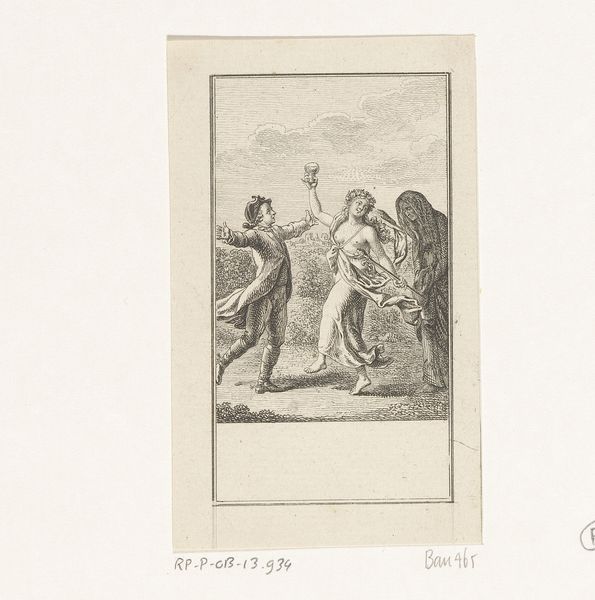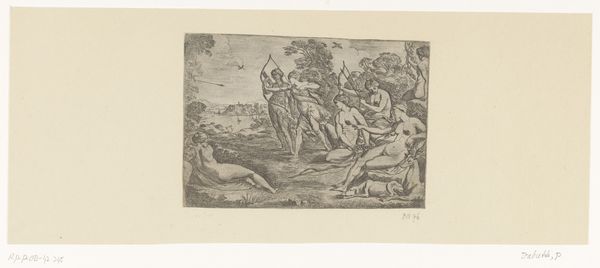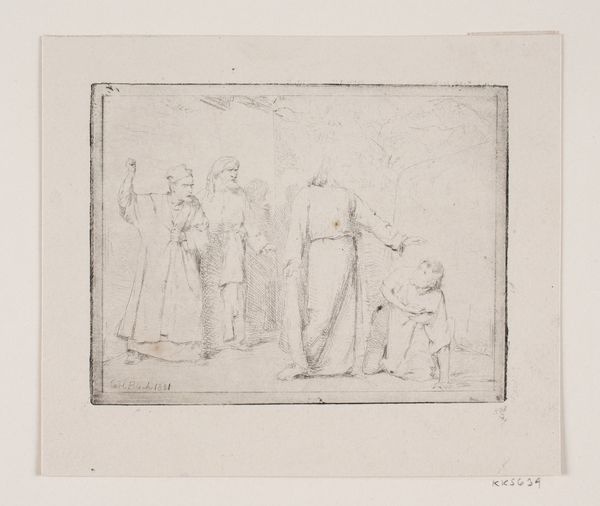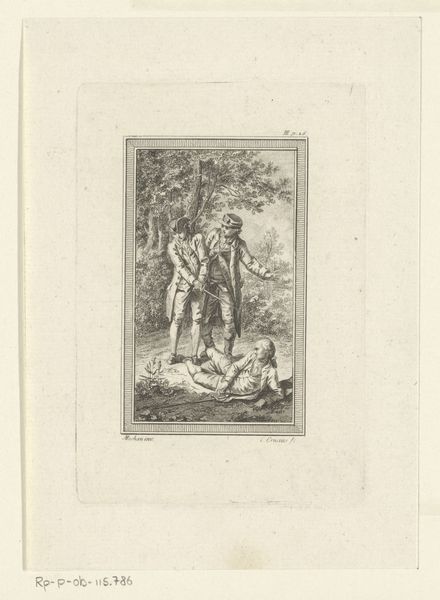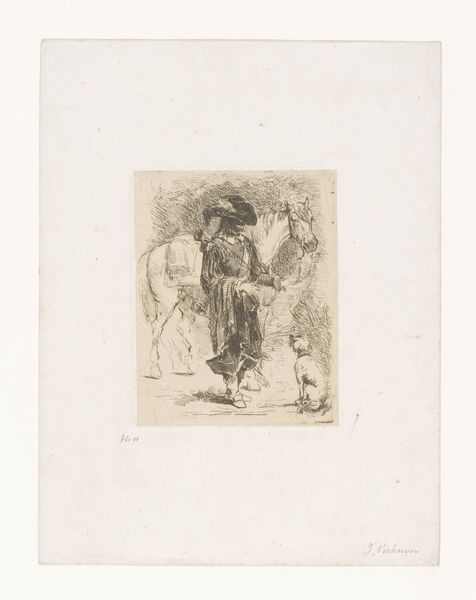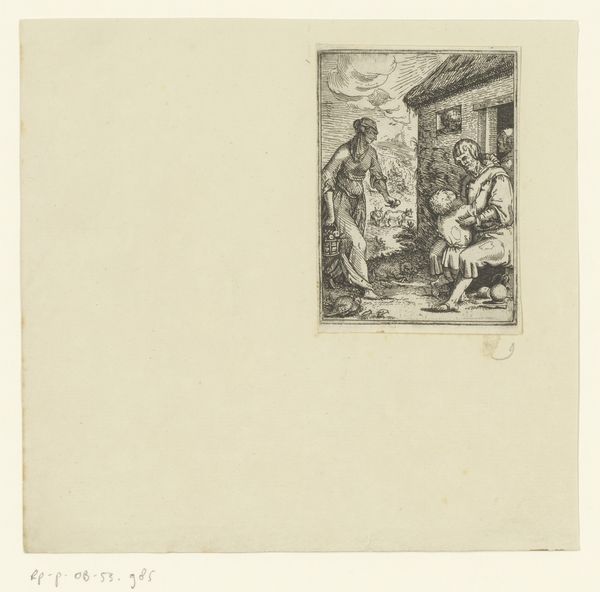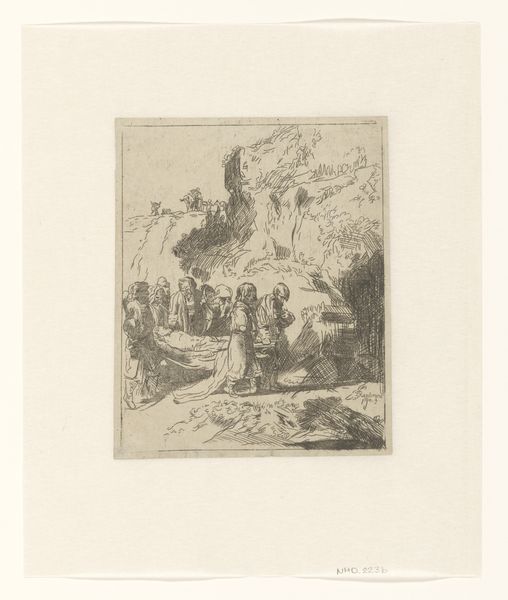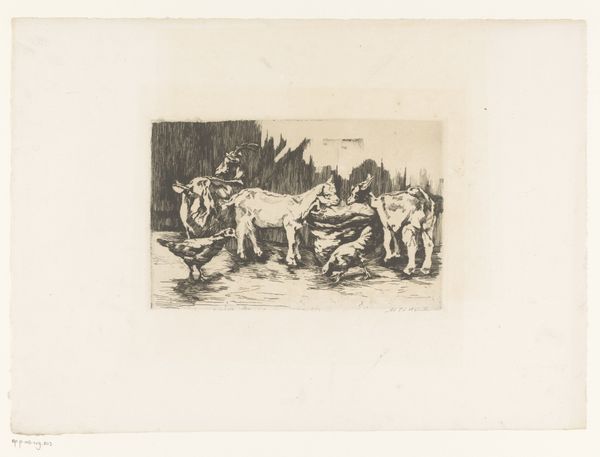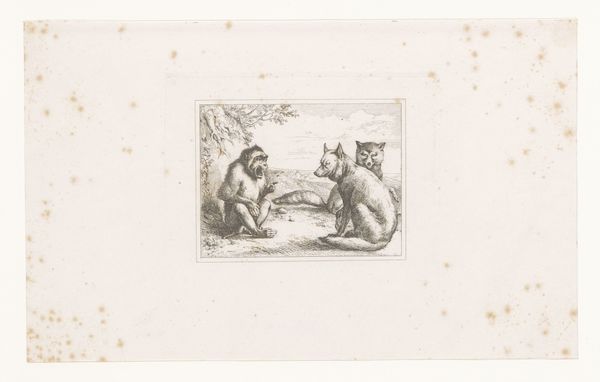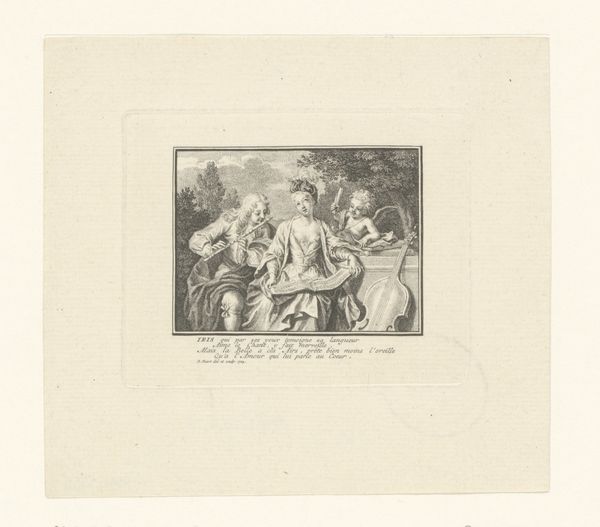
drawing, print, etching, paper, ink
#
drawing
# print
#
etching
#
etching
#
figuration
#
paper
#
ink
#
genre-painting
Dimensions: height 78 mm, width 93 mm
Copyright: Rijks Museum: Open Domain
Editor: Here we have Joannes Bemme’s “Three Naked Children by a Stone,” dating sometime between 1800 and 1841. It's an etching, small and delicate. I'm curious about the visible labor involved in this printmaking process; the lines seem so deliberately placed. What’s your perspective on this work? Curator: Well, let's consider the materials themselves. The etching process – the acid biting into the metal plate, the artist controlling the line through resist – reveals a painstaking act. The use of etching, as opposed to say, a quick sketch, indicates a desire for reproducibility. Who was the audience for such imagery? Editor: Possibly other artists, as a model? Or perhaps it reflects societal attitudes about innocence and childhood? Curator: Exactly! And what social role does it play when such images are circulated? Notice also the limited tonal range. Etching necessitates a clear delineation between light and shadow. How might this constraint affect the artist's representation of the children's bodies? Editor: It seems to push them toward idealization, almost like miniature classical figures. It's interesting to consider the act of creating the plate, and then making multiple prints, democratizing a vision. Curator: Indeed. The production becomes a performance, replicated over and over. Is the charm then, located not just in the 'subject', but in this carefully controlled manipulation of materials, labour and the market? Editor: I hadn't considered it quite that way before, focusing on the materials and what they communicate about its production. Curator: It shifts the focus from sentimental depiction to understanding art as a material practice embedded in its time. A single artwork yields rich understandings!
Comments
No comments
Be the first to comment and join the conversation on the ultimate creative platform.
